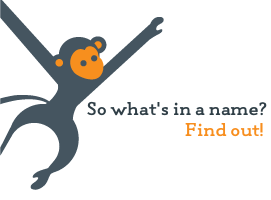
I’m going to start with the moral of the story:
“Warriors” are what you get when you treat action-minded “worriers” with respect and don’t just try to work around them.
Visionaries are what you get when you treat dreamers with respect and don’t just try point out the potential pitfalls in their ideas.
It is nearly impossible to be both a warrior and a visionary at the same time.
Navigating any worthy initiative needs both types of courage, and they both frustrate the other.
Yesterday, I posted this observation (and the header image here) on Facebook: “Our clients come in all shapes and sizes, but the one thing they have in common is courage. Remarkable passion fuels these small business, higher ed and nonprofit organization leaders as they fling themselves into the gap between where they are and where they want to be: it’s an honor to support them as they blaze new paths, create better practices, make difficult decisions, have the tough conversations, and generally find ways to defy fear, embrace change, and inspire their teams to do better tomorrow than yesterday.”
As a response to that post, a long-time friend, client and one of my favorite provocateurs reached out to me by email to continue the conversation. For the sake of this discussion, we’ll call him “TJ”. He was the one who crafted the “moral of the story” (above) and I have asked for his permission to post his thoughts here (orange italics) for the sake of furthering an important discussion:
“Courage is an appropriate word for those leading organizations or teams or families or just themselves. Not everyone is courageous, but not everyone who is brave is the same. I would suggest there are two types of courage. The bold innovators, the true game changers have what I call the Bobby Kennedy style of courage, “I dream of things that never were, and ask why not?” This group is blessed with the ability to see beyond the apparent hurdles to the magnificent horizon.
I would argue many more of us muster a different brand of courage, the courage born from the fear of messing up, the fear of embarrassment, the fear of failure. Despite all the obstacles they can see and imagine, this group gets out of bed each day and takes the responsibility to keep the ship in the channel, heading to the destination.
My experiences tell me that both types of courage are needed for an entity to succeed, but that very few people have both types. In fact, I’m not sure it is possible for one person to be both visionary while at the same time sweating the details. That seems intuitive to me. But what happens when someone is perceived as fearful because his/her courage is different?
In the best organizations, this difference is recognized, embraced and respected. In many more organizations, this difference leads to resentment. I would argue that dreamers need to be challenged to better appreciate those in their organizations that give them the time, space and freedom to dream. Worriers (for lack of a better term at this point) should be challenged to better recognize the value of those who create the vision and destinations that give organizations meaning, purpose and a future.”
My response:
I would call the latter category — the brave ship steerers you refer to — Warriors instead of Worriers. They muster a different brand of courage, waking up every day, conquering their fears to head back to the project/company/work battlefield despite all the minefields that they know exist (and a whole lot more that are just imagined.)
What too few people understand, and you rightly point out, is that organizations desperately need both the visionary’s courage and the warrior’s courage to successfully find the open blue waters to navigate.
It’s a delicate balance – one represented by a different photo.
Too much or too little of either side’s courage, and the whole operation collapses.
As leadership teams, we must understand that each side doesn’t just benefit from, but RELIES ON the other side to bring their best strengths to the table.
Believing that either brand of courage alone could lead the ship safely is a false confidence that will surely run the ship aground on one path or another: into waters too rocky or shallow to survive or so deep and stormy that the ship will be submerged.
Just acknowledging that there ARE two types of courage (and probably more!) is a huge step towards embracing the balance, and the momentum that can come when that balance is in harmony.
If you are a visionary leader, resist the urge to view the warriors on your team as “worriers.”
If you are a warrior leader, resist the urge to dismiss the “dreamer” side of your visionary colleagues.
We can all navigate more wisely, when we can see how to use all the talents available on the team to their best use.



